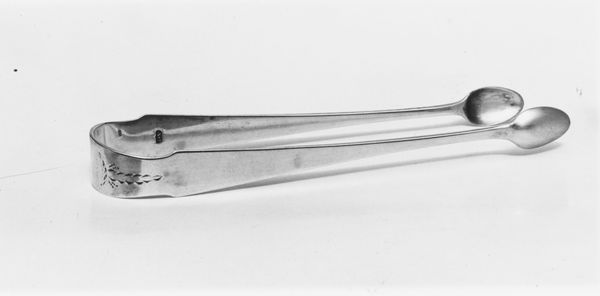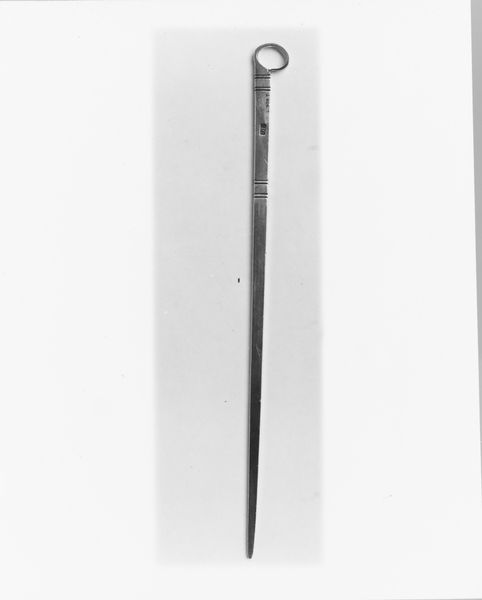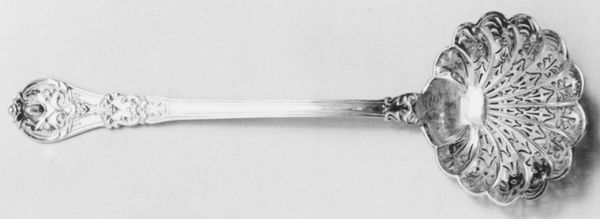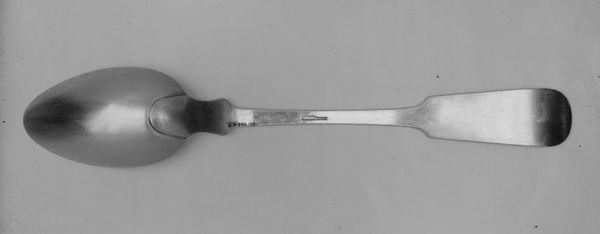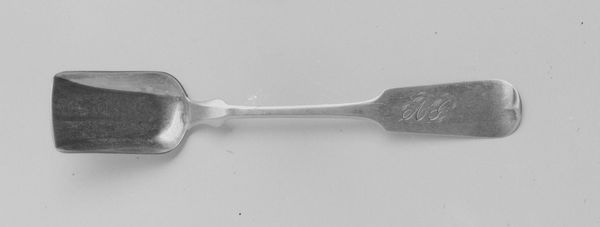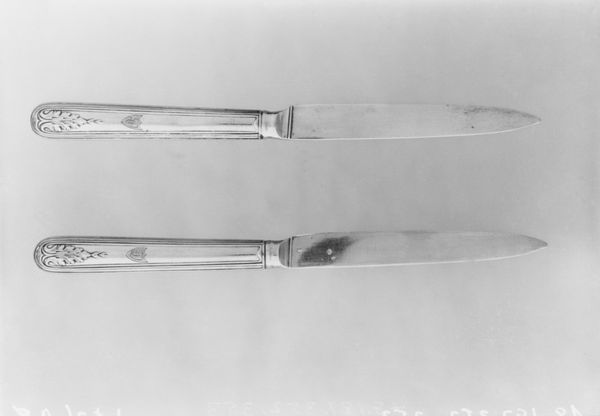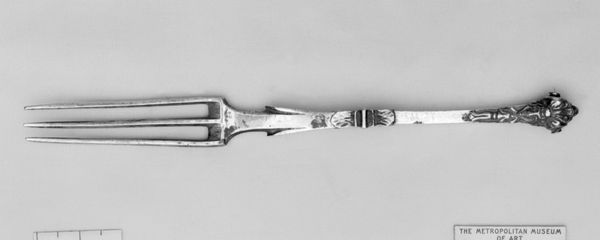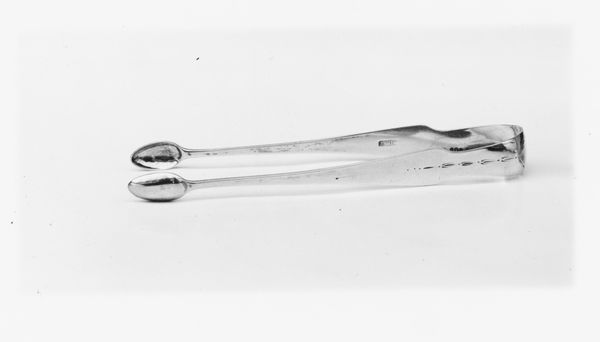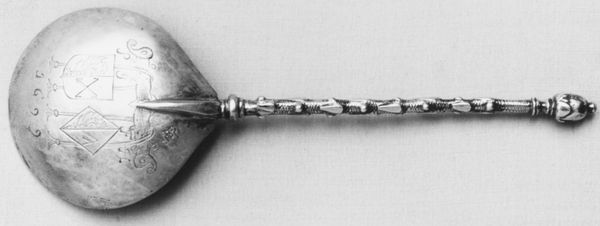
silver, metal, photography
#
silver
#
metal
#
photography
#
black and white theme
#
geometric
#
black and white
#
united-states
Dimensions: L. 6 5/8 in. (16.8 cm)
Copyright: Public Domain
Curator: What strikes me immediately is this almost surreal starkness—this image of silver tongs, gleaming against a flat white field. It feels hyper-real, like an advertisement but from another century. Editor: Exactly! This image presents "Tongs," a photograph of a utilitarian object rendered with such precision it invites us to consider the socio-economic context of its production. Dating back to the period 1810-1830, and held at The Metropolitan Museum of Art, it represents the culture of the United States at that time. Curator: They're beautiful, yes, but also inherently…class-based, aren’t they? Who needed silver tongs in the early 19th century? Certainly not the folks working the fields or in factories. It screams bourgeois comfort, doesn't it? A subtle signifier of a household managing tea or sugar with refinement. Editor: Absolutely. Utensils like these silver tongs were tools in constructing and communicating social identity and domestic spaces during the Federalist and Empire periods. Owning objects like these signifies aspiration to—if not established membership in—privileged social spheres. This also speaks to race, of course. Curator: I wonder about the hands that once held them. I imagine a woman, maybe, delicately offering a sugar cube. Or perhaps a stern-faced man using them with deliberate care. A whole drama compressed into this single frame. I almost expect someone to grasp them. Editor: By considering how the image situates everyday objects of this period, we gain insights into contemporary notions of luxury and refinement. What it meant to perform manners—gestures coded for exclusivity, that became naturalized within select social enclaves but utterly unattainable for many. How this informs understandings of access to social mobility. Curator: Right. I find that really compelling here. It all points to that quiet power dynamic that is frozen in that precise metallic sheen. So much unspoken communication. Editor: These tongs in essence exemplify how everyday objects can become markers of identity and power within broader historical and social frameworks, prompting reflection on equity, access, and privilege. Curator: In the end, it reminds you of what Roland Barthes said, that we constantly transform life into meaning, transform this object. Thanks for all the insight! Editor: It has been an interesting dialogue!
Comments
No comments
Be the first to comment and join the conversation on the ultimate creative platform.

